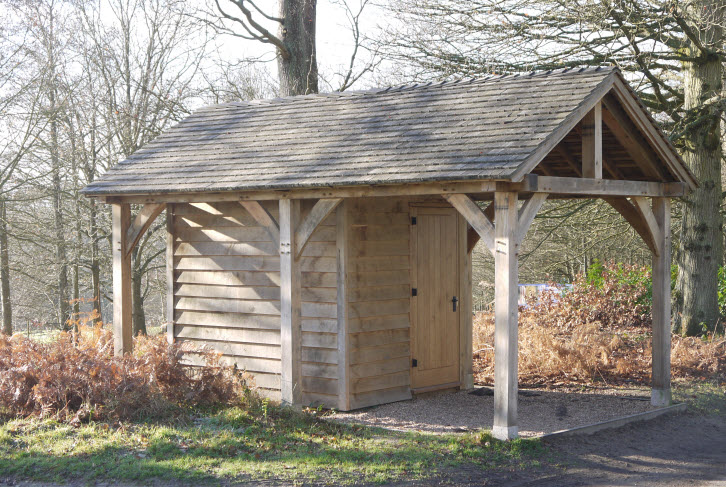Frequently Asked Shed Insulation Questions
by John Coupe
(Admin)
Shed Insulation FAQ – I get asked a lot of questions about shed insulation and so I have pulled them together onto one page for you to browse. Hopefully, you can find an answer to your question in amongst these.
If not please visit my Shed Questions page and ask away.
My only request before you do this is to take the time to submit several pictures and write a good summary your problem. I am keen to help but if I just get a one-liner saying - “I need some help with my shed roof!” it takes a lot longer to help you get to the root of the problem and find a solution.
I look forward to hearing from you if you don’t find an answer to your question below:
Return to Shed Insulation Questions.
Shed Insulation
by Neil
(North Carolina)
I have a 10x16 shed I recently built. Its 2x4 wall and roof construction and its built raised up off the ground sitting on solid concrete blocks. As an afterthought I am considering insulating it to make it a bit more habitable this winter as I have a small wood shop in it. I also built a little play area for my kids in the loft area of the shed.
So, my question is how would I go about insulating it to make it a bit more comfortable this winter for me and the kids? I am thinking of just using a small oil filled electric heater to keep it from being so cold in there.
Thanks!
Comments for Shed Insulation
|
||
|
||
Insulating a 16'x10' Shiplap Shed
by Mark
(Ireland)
Hi there, I'm just in the process of buying a 16x10 shiplap shed with a steel roof. I have a couple of questions:
1.What insulation for walls -thickness and type
2 What material to cover the insulation -plywood plasterboard and what thickness on the walls
3.What thickness of insulation on floor and what to cover insulation and what thickness
4 I'm thinking of using pvc windows instead of single pane supplied - are they difficult and successful to fit to a timber shed?
5 Thank for your time in reading this
this building is situated in Ireland where cold and damp come from. ;-)
Comments for Insulating a 16'x10' Shiplap Shed
|
||
|
||
Insulating a shed to keep heat out
by Otto Go
(Antelope, Ca)
I just got an 8x12 Yardline shed built and I want to insulate the inside the keep it cooler inside for the hot summers here in Roseville Ca. What are some tips, I wanted to know if going through the process of insulating will even help keep it cooler?? Please advise? It is 2x4 construction
Answer:
Hi Otto,
Thanks for your question. I can think of three low-cost techniques for limiting the heat gain in a shed:
The first is to make the outside of the shed as light a colour as possible so that it reflects the suns heat. This can take the form of painting the outside of the shed a light colour, white or light pastel shades would work well.
Roofs coverings are often dark (thinking of felt shingles here) and absorb heat. Shingles have an impregnated mineral on the surface to help reflect the heat. But this isn’t too effective and the minerals become detached over time.
The roof that I would recommend would be a silver metallic roof which is about as reflective of heat and light as you can get!
You could instal this on top of the plywood/shingles that you already have with an air gap beneath. This should prevent a fair amount of heat absorption.
The second technique would be to install a radiant barrier. This is effectively a sheet of tough aluminium foil that reflects the heat from the sun back out rather than allowing it into the building. This can be fixed to the inside of the walls and roof. Speak to a local builders merchant to see what is used locally.
The third item that you should investigate would be ventilation. Make sure that you have vents at the base and also at the highest point of the roof (at each end). The vents will allow cooler air from ground level in and allow the warmer air at roof level to escape. Having vents on opposing sides of the building will allow the building to benefit from any small breezes.
Dependent on how you intend to use the shed then having doors and windows open to enable the heat to escape would help too. (With shades over the door and window to stop the sun/heat entering).
The first of the three items are quite passive in their implementation and once installed will keep on working without further input.
I think that I would only install insulation if you were looking to actively cool the building with an air-con unit. If you were to follow this route then the buildings colour and the radiant barrier would still be effective. However, you would then want the building to be as airtight as possible to stop cool air escaping, so I would re-consider the vents.
The thickness and type of insulation would depend on the outside temperature and the temperature that you wished to achieve.
I hope that this helps to progress your thoughts and that you have found it useful.
Regards
John
PS. It would be great if you could send me a picture of your shed. (did you mean a Heartland Shed? Or Hardline?)
Comments for Insulating a shed to keep heat out
|
||
|
||
|
||
|
||
|
||

Keep in touch with our monthly newsletter
Shed Building Monthly




